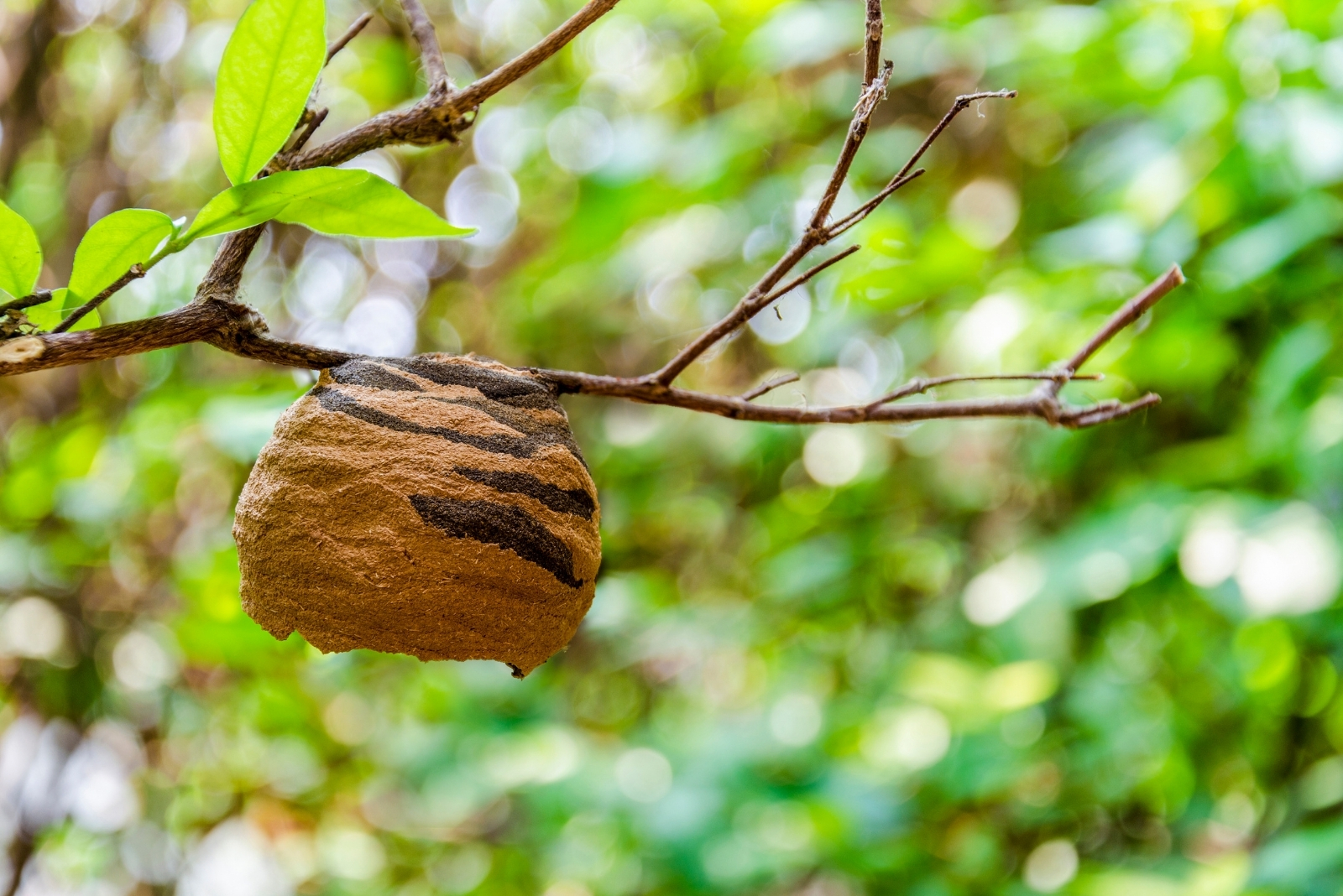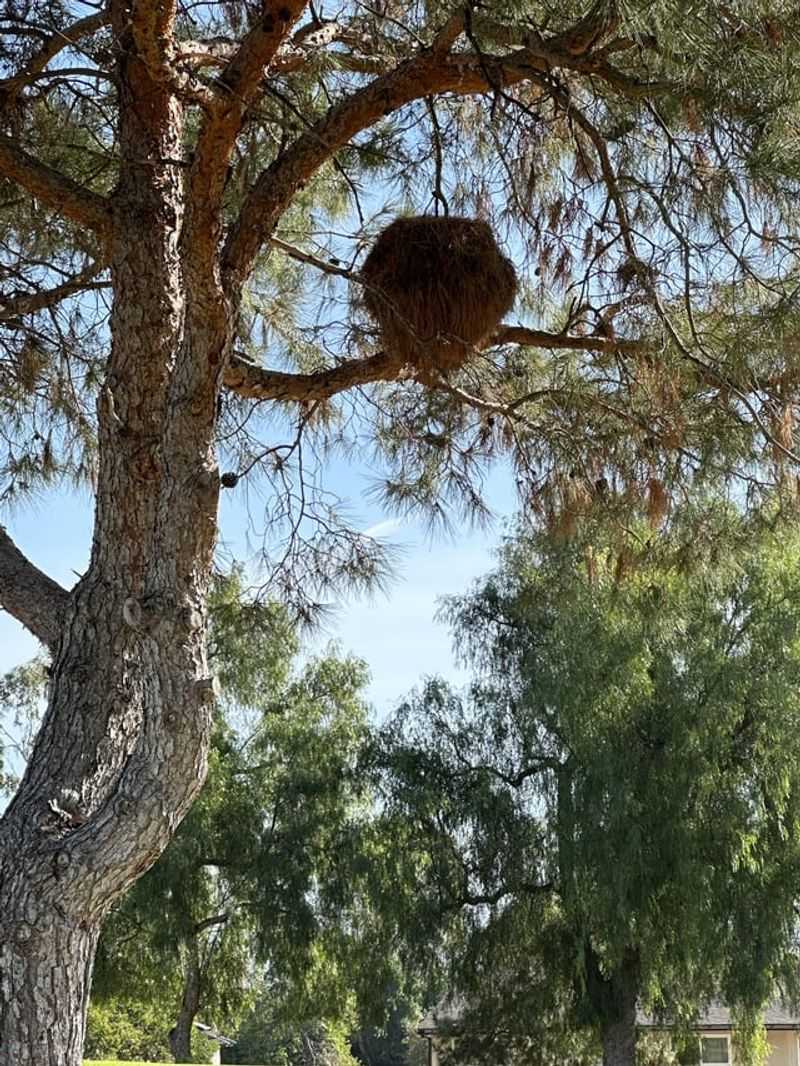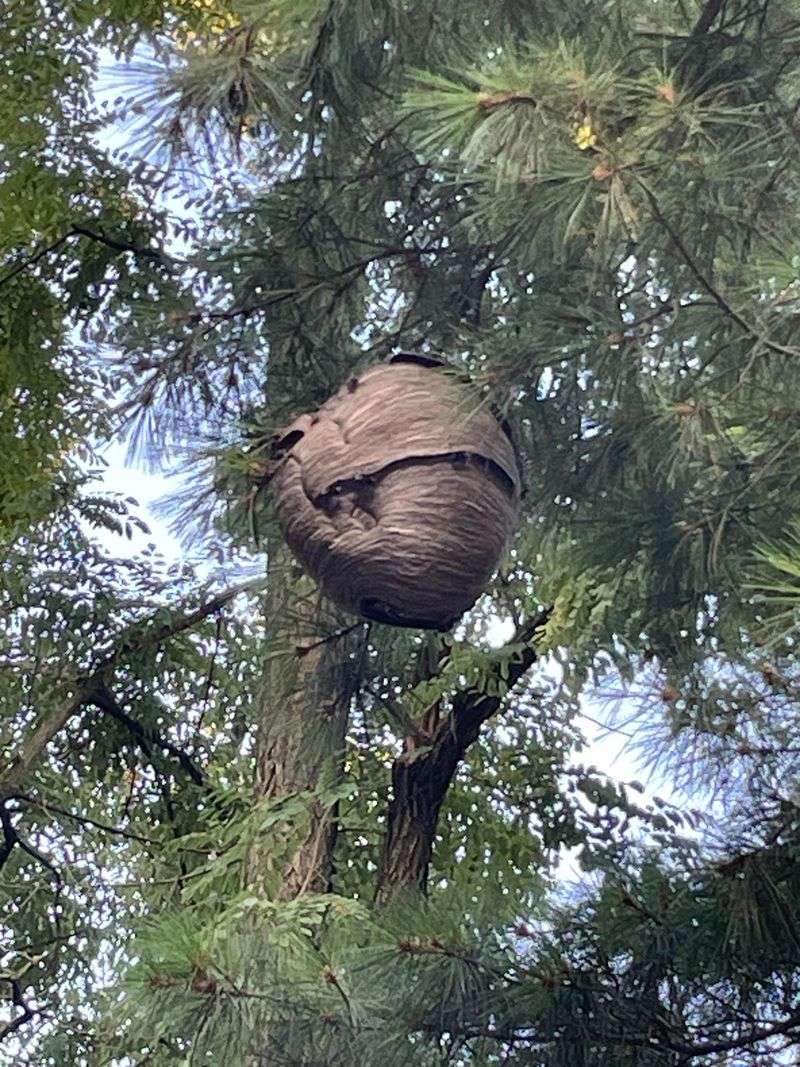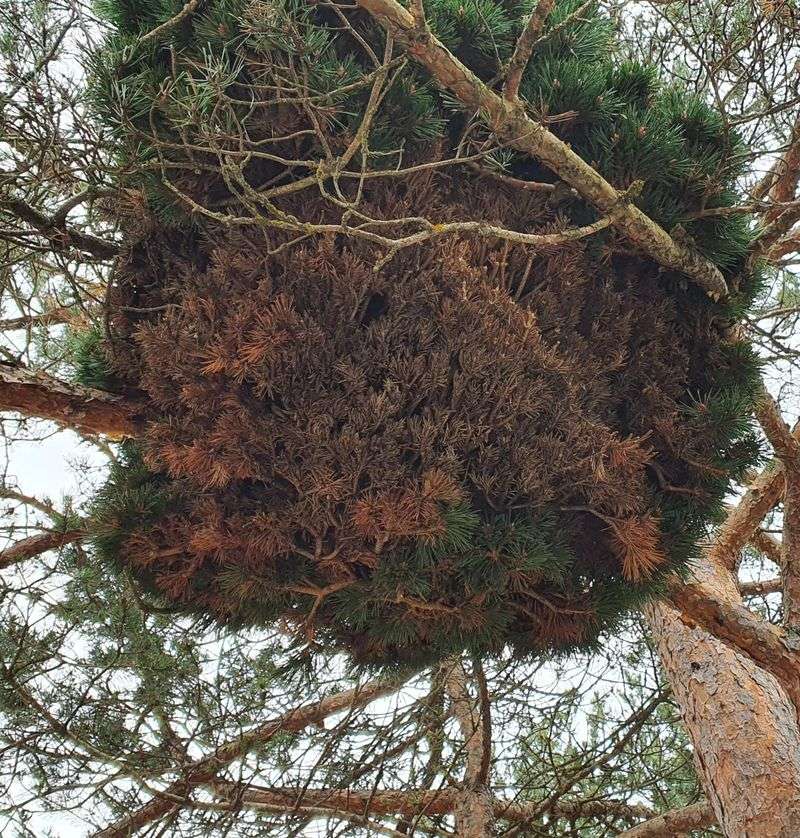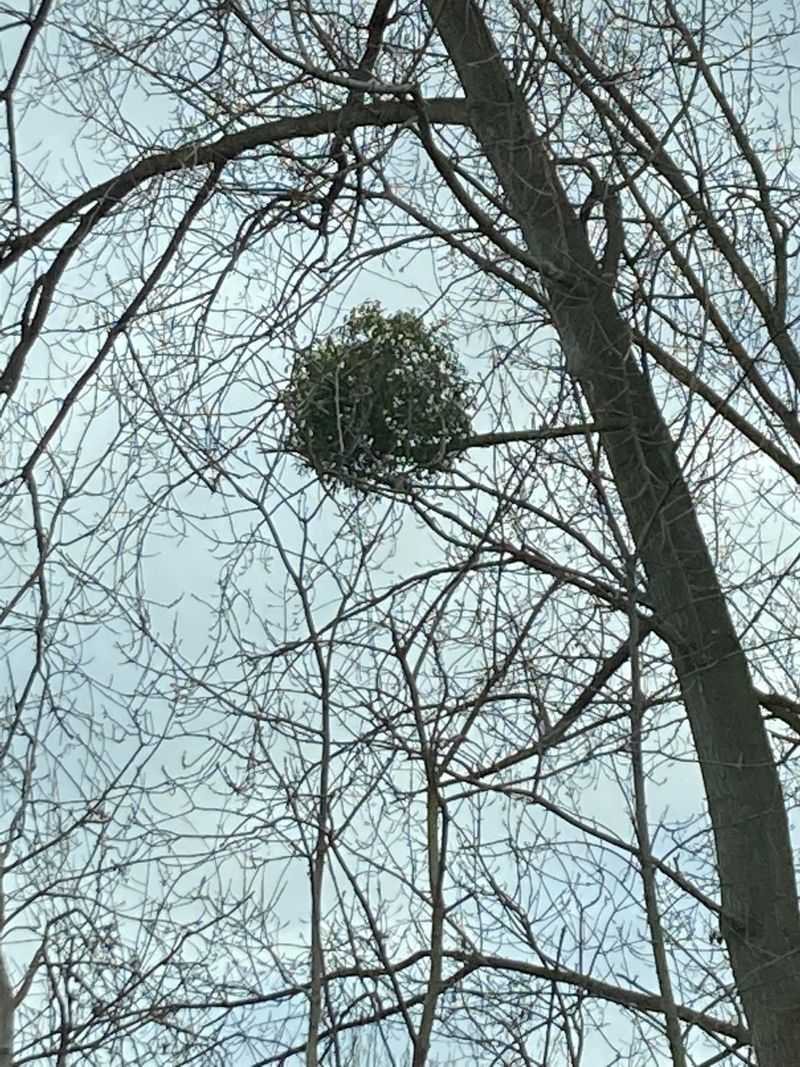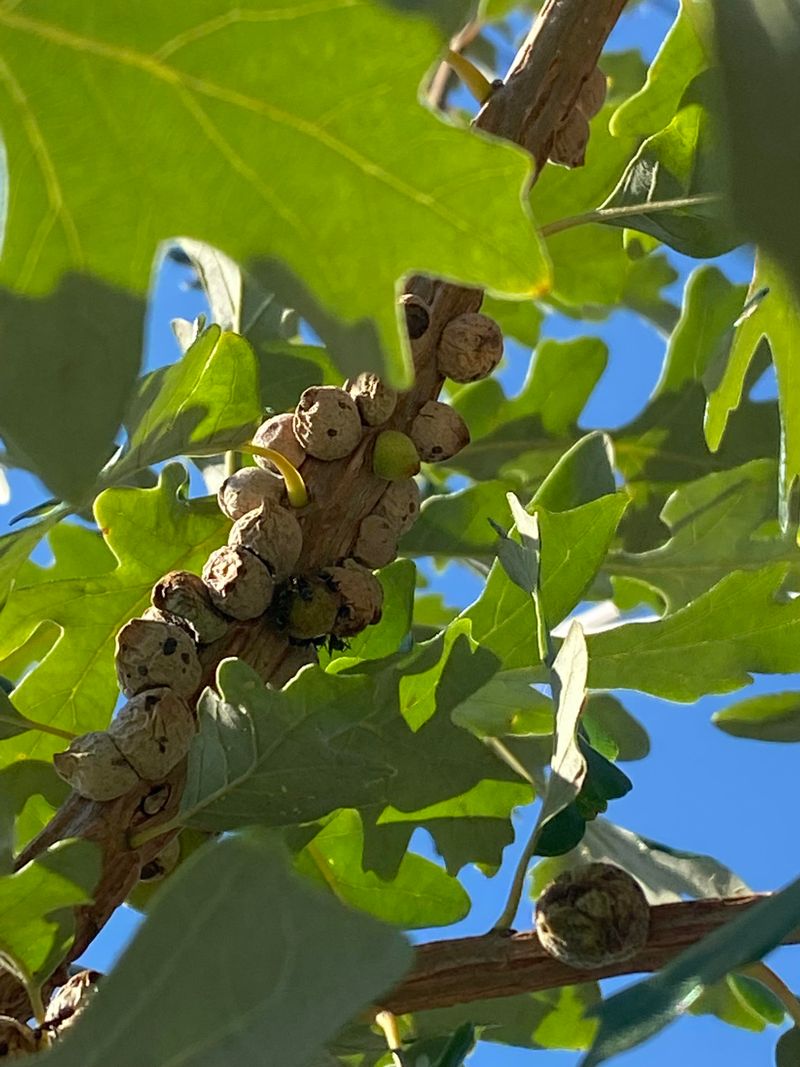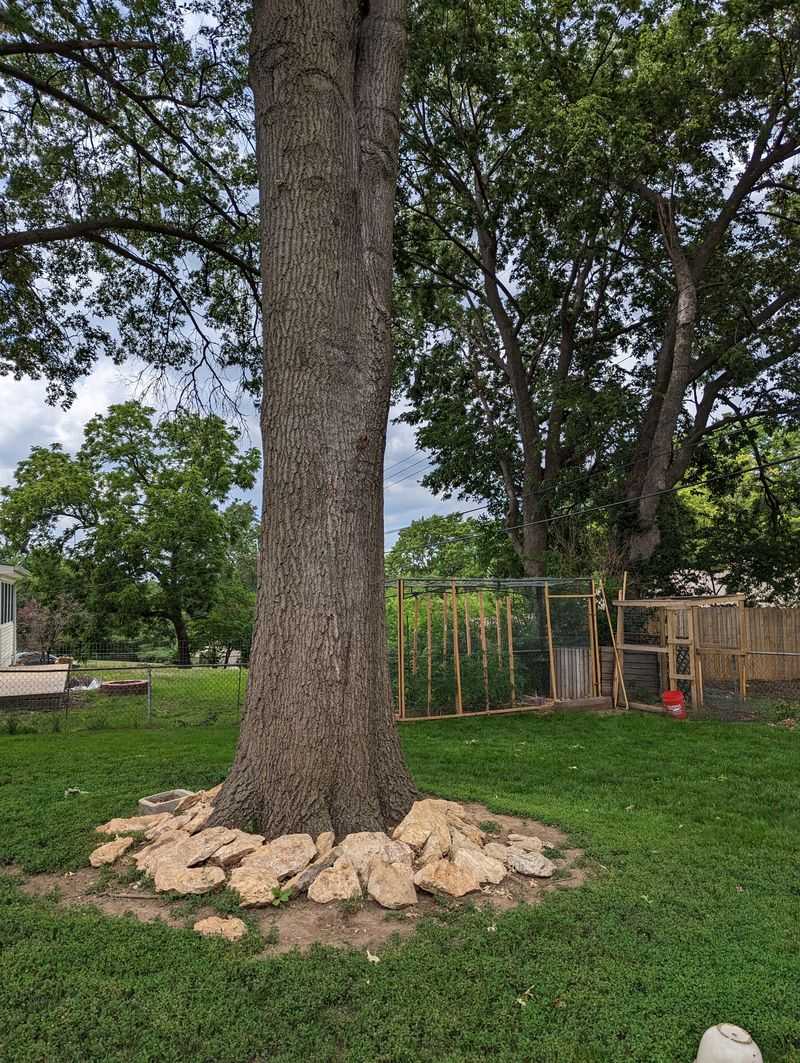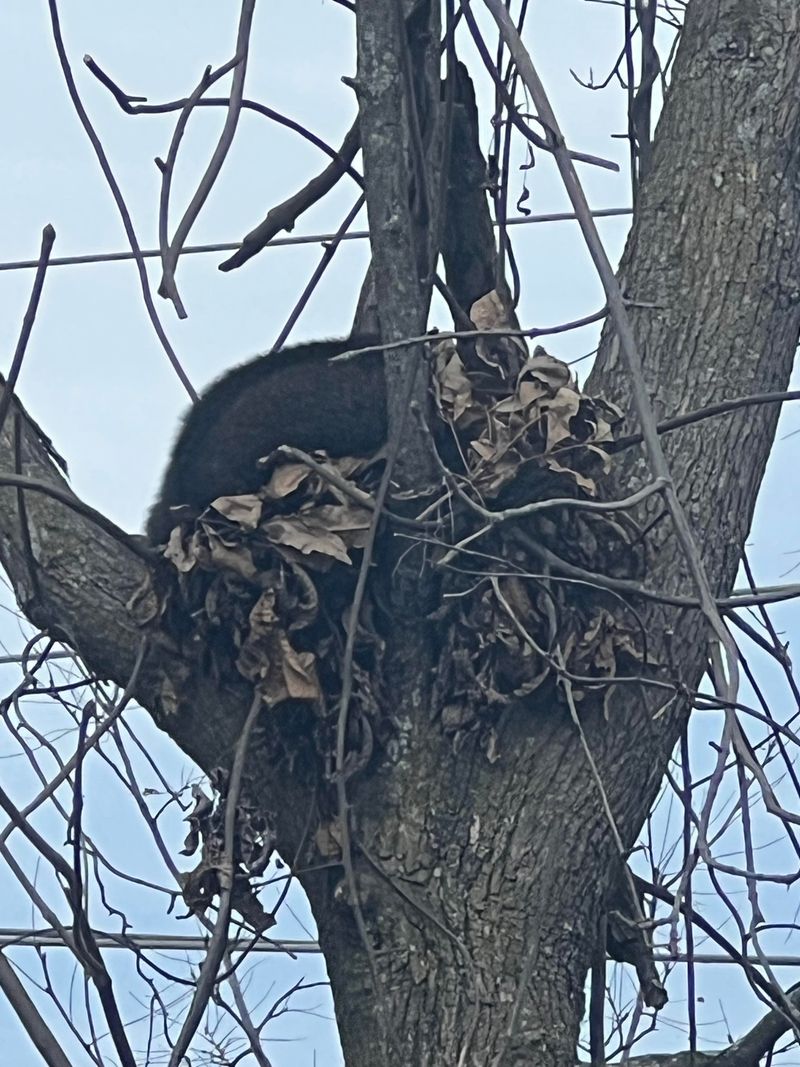A clump of leaves high in a Georgia tree can spark curiosity. I used to think they were always nests until I learned differently.
It turns out nature enjoys keeping us guessing. Here’s what might actually be going on with that leafy cluster in your Georgia tree.
1. Squirrel Dreys Are Cozy Hideaways
Squirrels build leafy homes called dreys that look remarkably similar to bird nests from the ground. In Georgia, gray squirrels gather leaves, twigs, and bark to weave together waterproof shelters high in the branches.
Unlike flimsy bird nests, dreys have thick walls and are often larger and rounder. Squirrels use these structures year-round for sleeping, raising babies, and escaping bad weather. Next time you see one, watch for a bushy tail darting nearby!
2. Wasp and Hornet Nests Pack a Sting
Those papery gray or brown balls hanging from Georgia tree branches could be wasp or hornet nests, not bird homes. Bald-faced hornets and paper wasps construct elaborate nests from chewed wood pulp mixed with saliva.
From a distance, these nests might resemble leaf clusters, but up close they have a distinct papery texture with hexagonal cells inside. During warm Georgia months, thousands of stinging insects could occupy a single nest. Always keep your distance and call professionals if removal is needed!
3. Witches Broom Disease Creates Odd Growth
Witches broom is a plant disease that causes dense clusters of twigs and leaves to grow in tight bunches. Across Georgia, this condition affects various trees, creating formations that look like messy nests from below.
Fungi, viruses, or even tiny mites trigger this abnormal growth pattern. The tangled branches sprout excessively in one spot, forming a ball-shaped mass. While it might alarm homeowners, witches broom rarely kills healthy trees, though it does look pretty strange up there in the canopy!
4. Mistletoe Clumps Spread Through Trees
Mistletoe is a parasitic plant that grows as green, bushy clumps high in Georgia hardwood trees. Birds spread mistletoe seeds through their droppings, allowing the plant to latch onto branches and steal nutrients.
During winter when deciduous trees lose their leaves, mistletoe becomes especially visible as rounded green masses. Many people mistake these for abandoned nests. In Georgia forests, mistletoe is quite common on oaks, elms, and other native species. While romantic at Christmas, it can weaken host trees over time.
5. Leaf Galls Form From Insect Activity
Tiny insects like mites and wasps lay eggs inside tree leaves, triggering unusual growths called galls. In Georgia oak trees especially, these galls can cluster together, creating bumpy masses that resemble nests.
Each gall protects developing insect larvae inside while the tree tissue grows abnormally around them. Some galls look like fuzzy balls, while others appear smooth and round. Though they seem alarming, most galls cause minimal harm to healthy Georgia trees and eventually fall off naturally when the insects emerge.
6. Debris Caught After Storms Piles Up
Strong Georgia thunderstorms and high winds can lodge broken branches, leaves, and other debris into tree forks and crooks. What accumulates might look organized like a nest but is actually just random plant material stuck together.
After hurricanes or severe weather events sweep through Georgia, you will notice more of these accidental collections. Vines, Spanish moss, and torn leaves get tangled in branches, creating convincing nest-like shapes. Check after big storms to see if what you are observing is natural debris rather than animal construction.
7. Raccoon Dens Provide Sheltered Spaces
Raccoons often make dens in hollow trees, but they also gather leaves and soft materials to create comfortable resting spots in tree canopies. Throughout Georgia, raccoons adapt to both urban and rural environments by building temporary leaf beds.
Unlike permanent squirrel dreys, raccoon leaf nests tend to be messier and less structured. Raccoons are nocturnal, so you might spot one climbing to its leafy hideout at dusk. In Georgia suburbs, raccoons frequently choose tall oaks and pines for their elevated sleeping quarters, surprising homeowners who expected birds instead!

